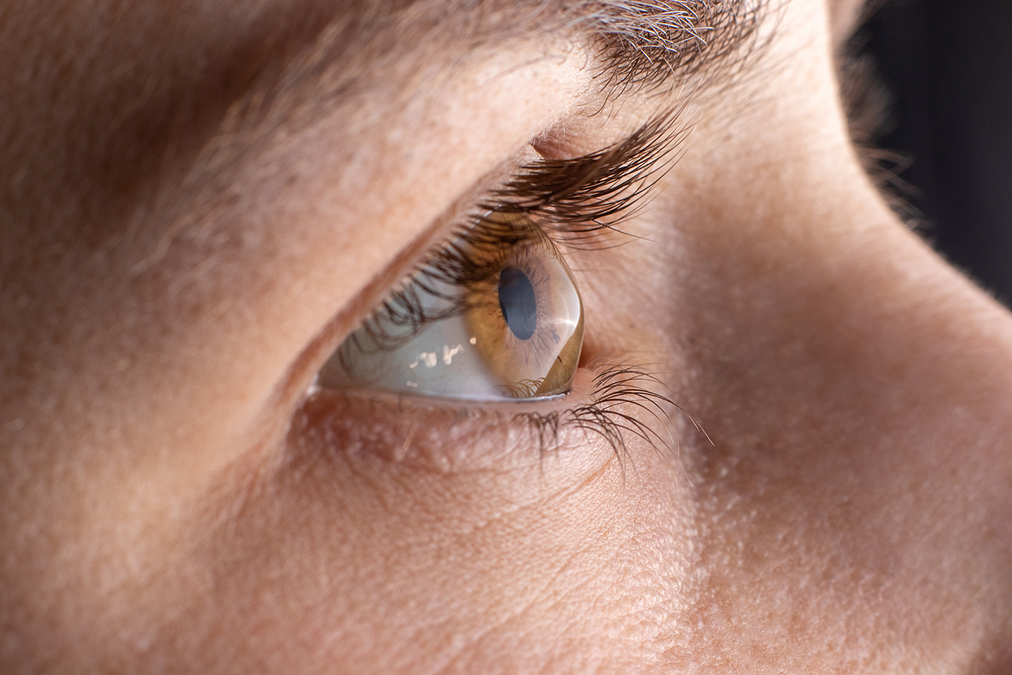 Shingles are horrible. The itch, the pain, the discomfort, and sometimes the months of aftereffects.
Shingles are horrible. The itch, the pain, the discomfort, and sometimes the months of aftereffects.
Blindness is not on the risk list most of us make for ourselves.
But we should, according to a new study published in La Revue de Medecine Interne, or the French Journal of Internal Medicine. Blindness caused by shingles is much more common than you think.
In a review of the literature on the relationship between viral infections and eye diseases, they found that herpes viruses were the most common culprits, primarily because they reoccur over time.
Herpes simplex, the virus that remains dormant in our bodies and repeatedly reactivates to cause fever blisters, is the greatest risk because it reactivates so often. But herpes zoster, the chickenpox virus that lies dormant in our bodies and later manifests as shingles, is not far behind.
Between 10% and 20% of all shingles cases occur in or near the eyes.
Because the virus travels along neural pathways, you can often feel it traveling in a line up or down your body on one side before a rash appears.
When it involves the eyes, the rash and blisters most commonly appear on your forehead, on the tip of your nose, and on your eyelids. This happens because some of the nerves that serve your eyes, and through which the virus can travel, run through these regions.
You may also experience headaches, eye pain, redness, eye watering, blurry vision, and sensitivity to light.
The danger of this condition is that it can cause inflammation of your cornea, a condition called keratitis, which happens to be the most common cause of blindness in the world.
If your cornea remains inflamed, its cells can start to die and scar tissue can form. Since the cornea is the transparent layer that forms the front of your eye, scar tissue causes your cornea to become opaque and will block light from passing through. This is when blindness occurs.
Uveitis is another common consequence of eye shingles. This is inflammation of the uvea, which is the pigmented layer of your eye that lies beneath your sclera and cornea, on top of your retina. Inflammation can cause scar tissue here too.
Your retina, which is the layer of light-sensitive cells at the back of your eye that trigger the nerve impulses sent to your brain, is also in the firing line.
If these cells become inflamed, they can also die, in a condition experts call retinal necrosis. This will cause you to lose your light vision.
Possibly because the nerves in and around your eyes are so close to your brain, the scientists found that eye shingles pose a stroke risk in the first year after the episode. During this period, people with eye shingles have a 4.3 times higher risk of stroke than other shingles patients.
If your immune system is weakened, you have an autoimmune disease, you are female, or you’re above 50 years of age, you carry the greatest risk that shingles will move into your eyes. But everyone is at great risk.
The bottom line is that you absolutely must treat your shingles as quickly as possible to avoid these and other dire consequences. Here is the exact protocol thousands of readers have used to eliminate their shingles in days…

 Overcoming IBD
Overcoming IBD Multiple Sclerosis
Multiple Sclerosis Banishing Bronchitis
Banishing Bronchitis Gum Disease Gone
Gum Disease Gone Overcoming Onychomycosis
Overcoming Onychomycosis Neuropathy No More
Neuropathy No More The Prostate Protocol
The Prostate Protocol Brain Booster
Brain Booster
 Ironbound
Ironbound
 Solution for Shingles
Solution for Shingles
 The Bone Density Solution
The Bone Density Solution
 The Ultimate Healing Protocol
The Ultimate Healing Protocol
 The Parkinson's Protocol
The Parkinson's Protocol
 The Chronic Kidney Disease Solution
The Chronic Kidney Disease Solution
 Overthrowing Anxiety
Overthrowing Anxiety The Fatty Liver Solution
The Fatty Liver Solution The Hypothyroidism Solution
The Hypothyroidism Solution
 The End of Gout
The End of Gout The Blood Pressure Program
The Blood Pressure Program
 The Oxigized Cholesterol Strategy
The Oxigized Cholesterol Strategy
 Stop Snoring And Sleep Apnea Program
Stop Snoring And Sleep Apnea Program
 The Arthritis Strategy
The Arthritis Strategy The Vertigo & Dizziness Program
The Vertigo & Dizziness Program The 3-Step Diabetes Strategy
The 3-Step Diabetes Strategy Hemorrhoids Healing Protocol
Hemorrhoids Healing Protocol The Erectile Dysfunction Master
The Erectile Dysfunction Master Weight Loss Breeze
Weight Loss Breeze The IBS Program
The IBS Program The Insomnia Program
The Insomnia Program The Migraine and Headache Program
The Migraine and Headache Program The Neck Pain Solution
The Neck Pain Solution The Menopause Solution
The Menopause Solution The Ejaculation Master
The Ejaculation Master The TMJ Solution
The TMJ Solution The Acid Reflux Solution
The Acid Reflux Solution The Fibromyalgia Solution
The Fibromyalgia Solution The Psoriasis Strategy
The Psoriasis Strategy